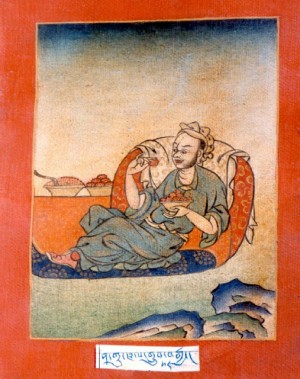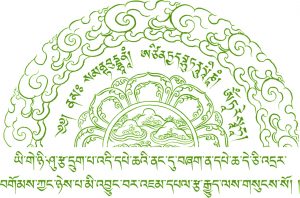Niguna was the son of a low caste householder in Purvadesa. He was very lazy and was indifferent to what others considered good or evil. In such a state, he went to a quiet place where he met a yogin. The yogin invited him to the city to ask for alms, but he merely replied negatively if they didn’t get anything. Out of compassion, the yogin gave food to him and as he ate, the yogin asked if he was frightened of death. Niguna said he is afraid, but have no way to deal with it, and if there were a method, he would practice during the time he sleeps. So, having a method, the yogin initiated Niguna and gave him instructions on conjoining emptiness and appearances.
Listening to his guru’s instructions, while gathering alms, Niguna practiced. When he produced the realization of Total integration and the clear light, he attained siddhi. He demonstrated the path which does not split appearance and emptiness. Then, he wiped out all the marks of delusion and attained the siddhi of Mahamudra, and then went to the realm of the Dakas.
em
Busque no site
Busca por Assunto
Artigos Recentes

Yangchenma
Yangchenma (dbyangs can ma; Skt. Sarasvati) – para conhecimento e sabedoria. Loter …Leia Mais »
Sílaba Yang
Yang – Ar [རླུང] A sílaba semente para o elemento ar …Leia Mais »
Yamantaka
Yamantaka é expressão irada do Buda da Sabedoria Manjushri, também …Leia Mais »
Je Gedun Rinchen ‘s collected works – NGA
1 1.27MB 505KB 492KB 1.53MB 762KB rgyud kyi rgyal …Leia Mais »
Khatvanga
Khatvanga (Skt. khatvanga ; Tib. ཁ་ཊྭཱཾ་ག་, Wyl. kha Twan ga) — um tridente com …Leia Mais »



 Cintamani - Meditação e Arte - Copyright 2020 - Todos os direitos reservados.
Cintamani - Meditação e Arte - Copyright 2020 - Todos os direitos reservados.